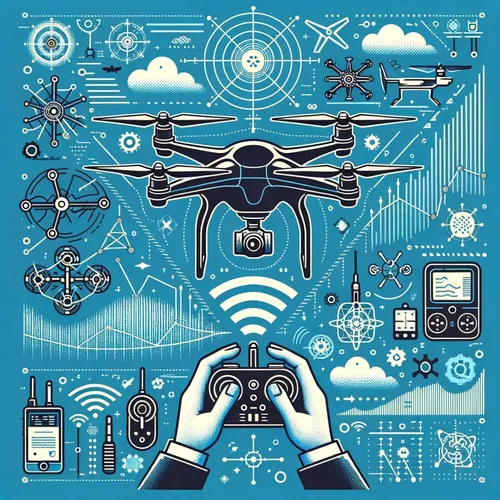Drones Gone Wild: Spying on Crops, Peeking at Pipes, and Soaring Profits
- Author
- Quiet. Please
- Published
- Mon 21 Jul 2025
- Episode Link
- https://www.spreaker.com/episode/drones-gone-wild-spying-on-crops-peeking-at-pipes-and-soaring-profits--67058770
This is you Commercial Drone Tech: Enterprise UAV Solutions podcast.
Commercial drone technology is rapidly transforming enterprise operations across key sectors such as construction, agriculture, energy, and infrastructure inspection. Large companies now rely on intelligent drone fleets, not just for aerial imagery but for deep integration with their core business systems. For example, construction firms deploy enterprise drone solutions to create 3D site models, track progress, and reduce labor costs, while energy companies use drones to inspect power lines and pipes remotely, improving safety and saving downtime. In agriculture, drones are essential for real-time crop monitoring and precision spraying, driving substantial gains in yield and resource efficiency. According to market research firms like Statista, the global commercial drone market is forecast to exceed 55 billion dollars in annual revenue by 2030, with double-digit growth across sectors.
Return on investment is increasingly clear as enterprise adoption scales up. Leading logistics companies, for instance, report up to 30 percent reductions in routine inspection costs after incorporating drone-based workflows. Case studies from infrastructure inspection demonstrate how a single drone flight can replace days of manual labor, providing faster insights while maintaining compliance with stringent safety standards. Solutions like Auterion and FlytBase now let managers oversee entire fleets using centralized dashboards, schedule predictive maintenance, and ensure every vehicle operates within compliance parameters—features vital for scaling up drone operations without ballooning overhead.
Compliance and data security are paramount, especially in regulated industries. Enterprise drone management platforms such as Aloft and FlytBase deliver built-in tools for airspace authorizations, digital flight logging, and integration with existing IT and business management systems to protect data and maintain regulatory adherence. Today’s hardware and software stacks offer modular integration, supporting third-party sensors, geofencing, and computer vision for object detection, further expanding what enterprises can accomplish. Training and implementation strategies remain critical; leading companies are investing in pilot certification, technician upskilling, and standardized software integration to maximize returns and minimize risk.
Recent news highlights enterprise momentum: Agricultural conglomerate Syngenta just partnered with a major drone vendor for field analysis automation; utility firms in Texas reported quicker storm recovery thanks to autonomous drone surveillance; and new Federal Aviation Administration waivers are enabling more routine beyond-visual-line-of-sight operations.
Practical takeaways: businesses should start with a clear mission definition, select scalable and secure software, invest in pilot and data analyst training, and align drone deployments with broader digital transformation goals.
Looking forward, advancements in artificial intelligence and real-time data analytics promise greater automation, autonomy, and integration with future smart infrastructure. For now, the opportunity is real—enterprise drone technology is not just about flying cameras, but about smarter, safer, and more efficient business operations. Thanks for tuning in and come back next week for more. This has been a Quiet Please production and for me check out QuietPlease Dot A I.
For more http://www.quietplease.ai
Get the best deals https://amzn.to/3ODvOta
